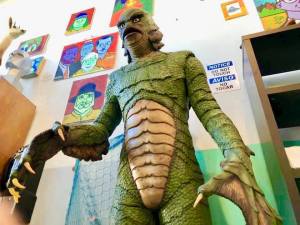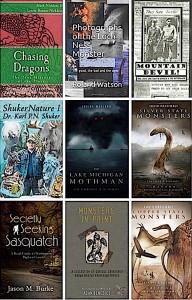
In the 1940s, the Scottish-born zoologist Ivan T. Sanderson began using a word he coined, “cryptozoology,” to describe a new subdiscipline of zoology that studied hidden, as yet-to-be-discovered large animals. Fieldworkers and authors previously had used the phrase, “romantic zoology.” In the late 1950s, after a decade of correspondence with Sanderson, Belgian zoologist Bernard Heuvelmans began formalizing “cryptozoology.”
Today, Sanderson’s and Heuvelmans’ precise approaches to the passion and patience of the field has grown into a more scientifically-aware cryptozoology, resulting in 21st century establishment of the International Cryptozoology Museum, journals, conferences, and other speciality museums. A history is being written about cryptozoology, as it grows older, year to year.
The Year of 2019 foreshadows the New Year of 2020, but first we must archive this decade’s highlights of old news. This overview of cryptozoological events, we shall share the highpoints and discoveries that made the year memorable.
The Top Ten Cryptozoology Stories of 2019 are:
#1. Was “It” A Bear or Bigfoot?

The biggest Bigfoot story of 2019 was the mystery surrounding the missing days in the life of Casey Hathaway, 3, of Emul, North Carolina. He disappeared while playing near his grandmother’s home with friends, and was found after spending two days lost in the woods. He told his family he had “hung out with a bear.” Speculation on the internet quickly jumped to wondering if Casey had misidentified a Bigfoot as a bear. For the complete story, see “Top Cryptozoology Story of 2019: A Boy, A Bear, and A Bigfoot In The Woods.”
#2. Another New Tiny Human Species Discovery Announced

As important as the find of the Flores “hobbit,” Homo floresiensis, in 2003, the Year 2019 saw Nature’s announcement of the discovery of Homo luzonensis in the Philippines. The small-bodied hominin lived on the island of Luzon at least 50,000 to 67,000 years ago. The hominin—identified from a total of seven teeth and six small bones—hosts a patchwork of ancient and more advanced features. See more here and here. See also “Denisovans in Tibet.”
#3. The FBI File on Bigfoot Released

One of the big stories of the year was one revealed from the past.
In 1976, Peter Byrne, the director of the Bigfoot Information Center and Exhibition in The Dalles, Oregon, sent the FBI “about 15 hairs attached to a tiny piece of skin.” Byrne wrote that his organization couldn’t identify what kind of animal it came from, and was hoping the FBI might analyze it. He also wanted to know if the FBI had analyzed suspected Bigfoot hair before; and if so, what the bureau’s conclusion was. In 1977, the FBI sent back the hair samples, noting the “hairs are of deer family origin.” But Byrne was in Nepal, apparently never was properly informed of the correspondence, and it was not until June of 2019 until the file was released.
The full story and it’s side trip into bits of information can be found here: “Spies in the Shadows and the FBI’s Bigfoot File.”
#4. Another “Goat Man” Death on the Tracks

On May 26, 2019, Savanna Bright, 15, died after being hit by a Norfolk Southern train on Sunday night, on the train tracks near the Pope Lick trestle, while searching for the Pope Lick Goat Man. See “Was The Pope Lick Goatman Responsible?“ See also “The Top Cryptozoology Obituaries of 2019.”





 Adrian Shine and Loren Coleman appeared on the documentary about the Loch Ness DNA results.
Adrian Shine and Loren Coleman appeared on the documentary about the Loch Ness DNA results.
Thirty-six years after the term was coined, a foundation word in cryptozoology reached a milestone. On 4/22/2019, the Merriam-Webster editors added 640 new words to their latest dictionary, the company told CBS Chicago. One of those new words is “cryptid,” which they announced by being a bit punny about it: “After years of searching for and collecting evidence, we put ‘cryptid’ in the dictionary.” See here.
+++


News from the International Cryptozoology Museum: During 2019, the Portland, Maine-based “world’s only cryptozoology institution” added new banks of display cases on the first and second floors, a new vintage model of the Gill-Man from Universal Studios from The Creature From The Black Lagoon, new taxidermy items demonstrating species candidates of “black panthers,” dioramas of Bigfoot/Yeti encounters, and a redesigned, modernized gift store was installed. Jean Tewksbury, the Museum’s new operations curator, began giving lectures to out-of-state Bigfoot groups. The Museum also is re-energizing it’s GoFundMe appeal for its 2020 exhibition.





Follow CryptoZooNews
Not Found
The resource could not be found.